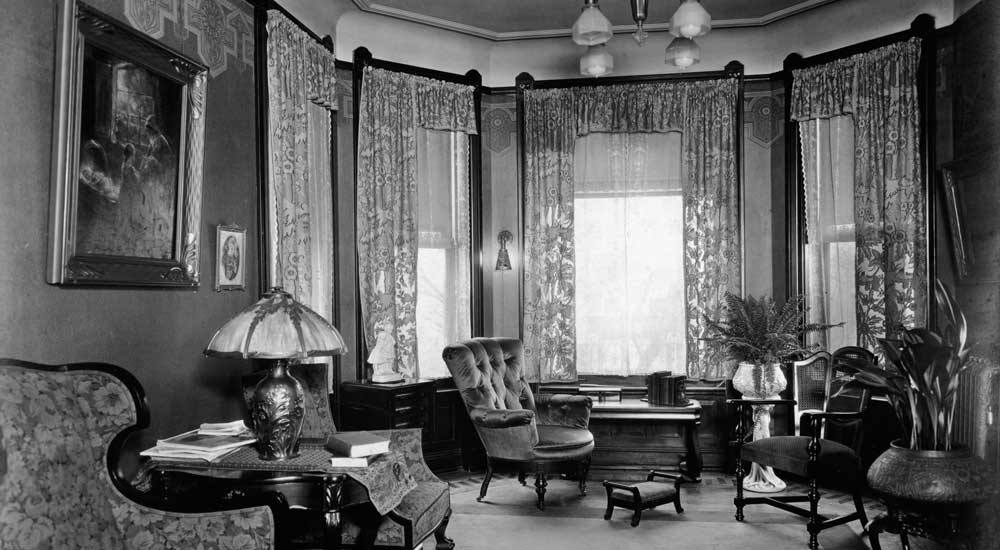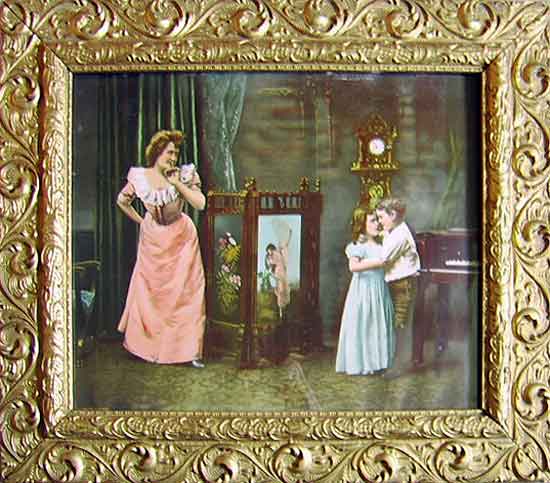Many of Tonnesen's Victorian/Edwardian parlor scenes were sold in extremely ornate frames such as this one. Usually, the frames were of a dark, somber color, and this one was probably repainted. The print is unsigned, but can be identified as Tonnesen's work. The clock, distinctive for its heart motif, appears in a number of signed Tonnesen prints. The print is titled "The Playmates." Copyright 1900 Joseph Hoover and son, Philadelphia.
Portraits and advertising aside, her circa 1900 art work became wildly popular as home decor. It seems to have consisted largely of elaborate and beautifully produced Victorian-themed parlor prints, as well as black and white prints sold to newspapers across the country for use as gifts to readers of Sunday supplements.
In 1903, Tonnesen promoted “The Famous Tonnesen Models” in an ad shown elsewhere on this site. (See “Beatrice Tonnesen Introduced New Trend in 1890 Advertising” by Sumner under “Tonnesen Business.”) Also, in 1900, the Chicago Daily Tribune ran a pictorial indentifying the “Commercial Models of Chicago.” This pictorial appears as Image #1 in Slideshow Album #11. The images that follow it show examples of Tonnesen’s Victorian parlor scenes, featuring several models who can be seen in the 1903 Tonnesen Model ad and/or the Chicago Tribune pictorial, which also gives the models’ names.
These models can also be found in the black and white Sunday supplement prints scattered throughout Slideshow Albums 2, 5, 6 and 10.
All Content Copyright 2008 Lois Emerson


